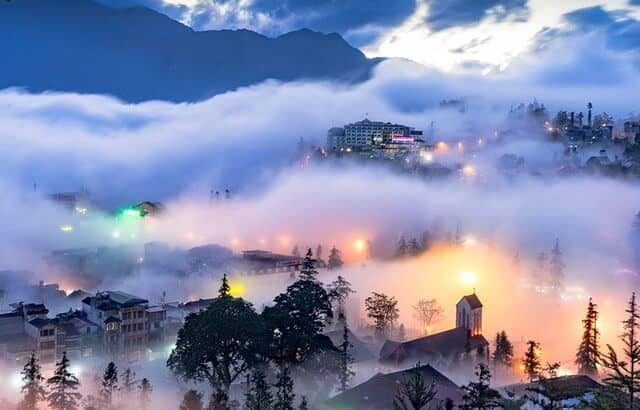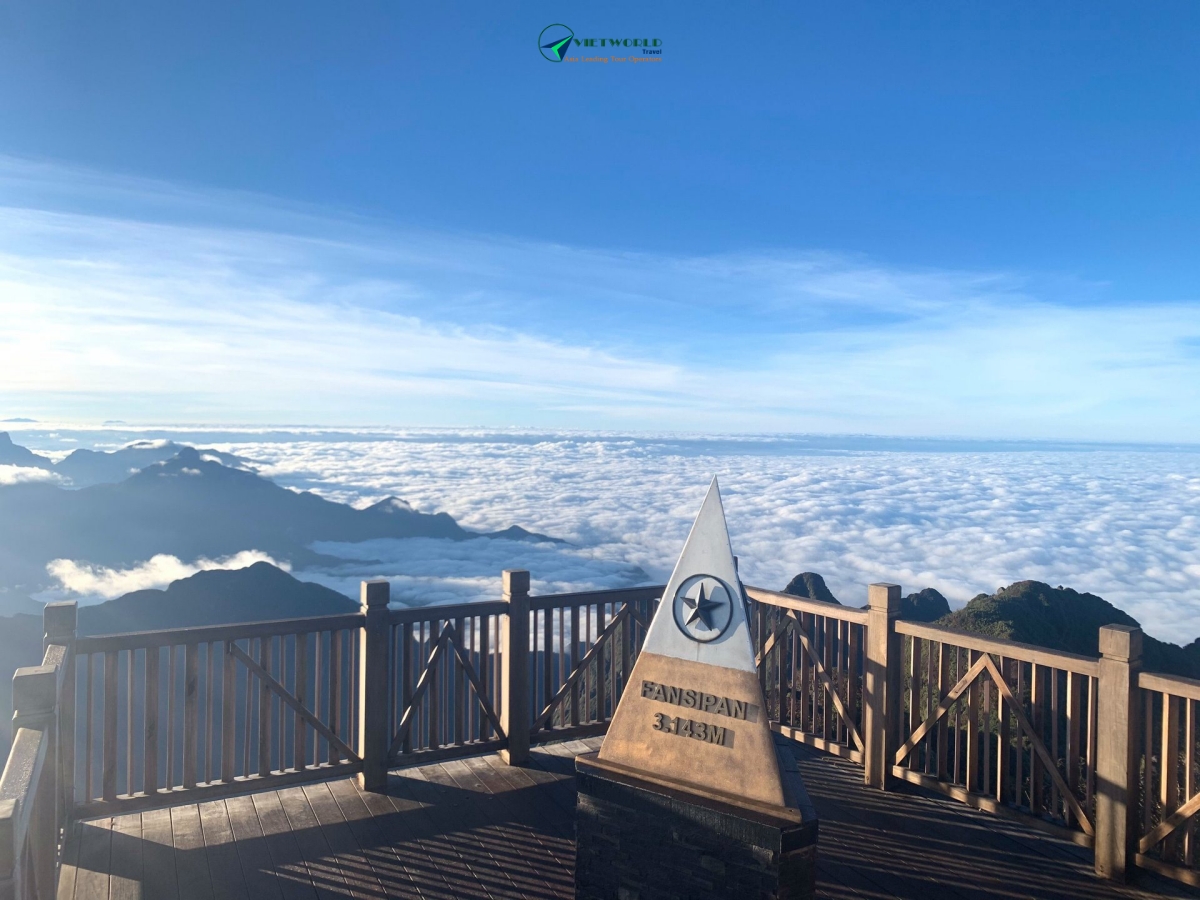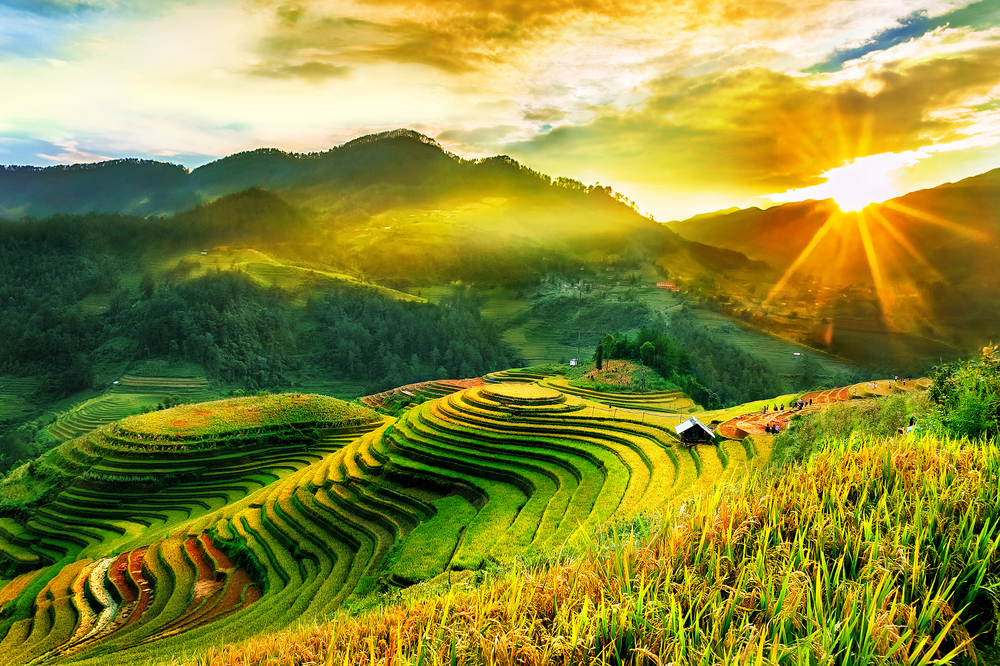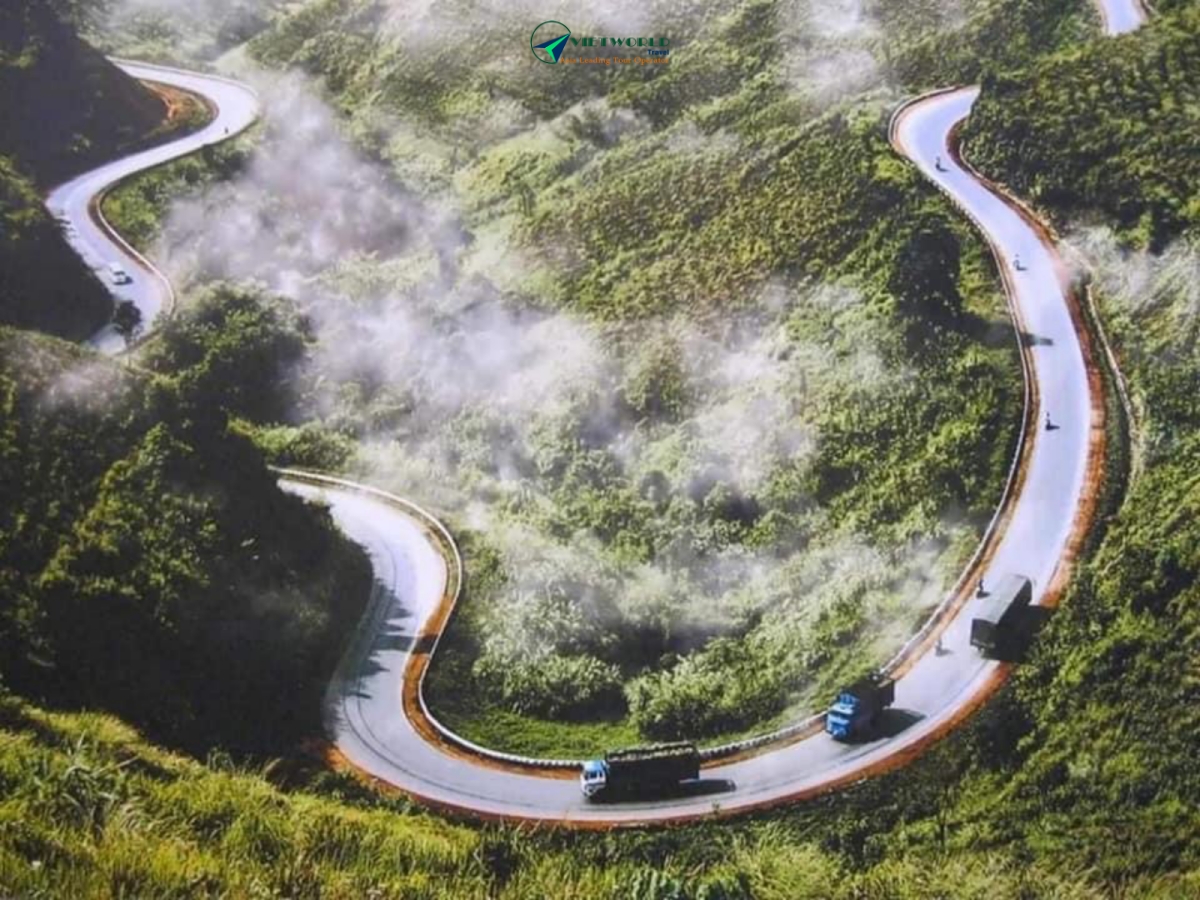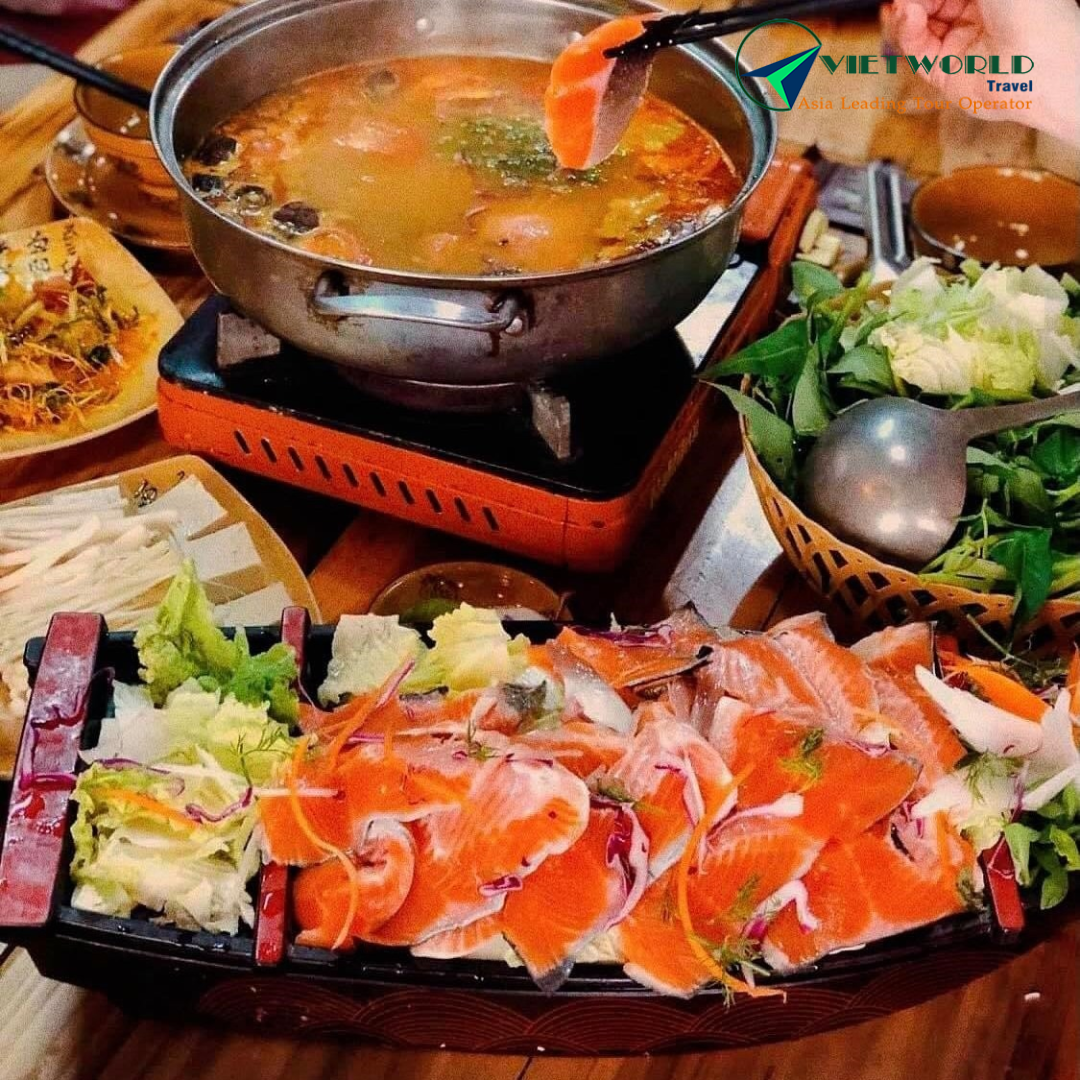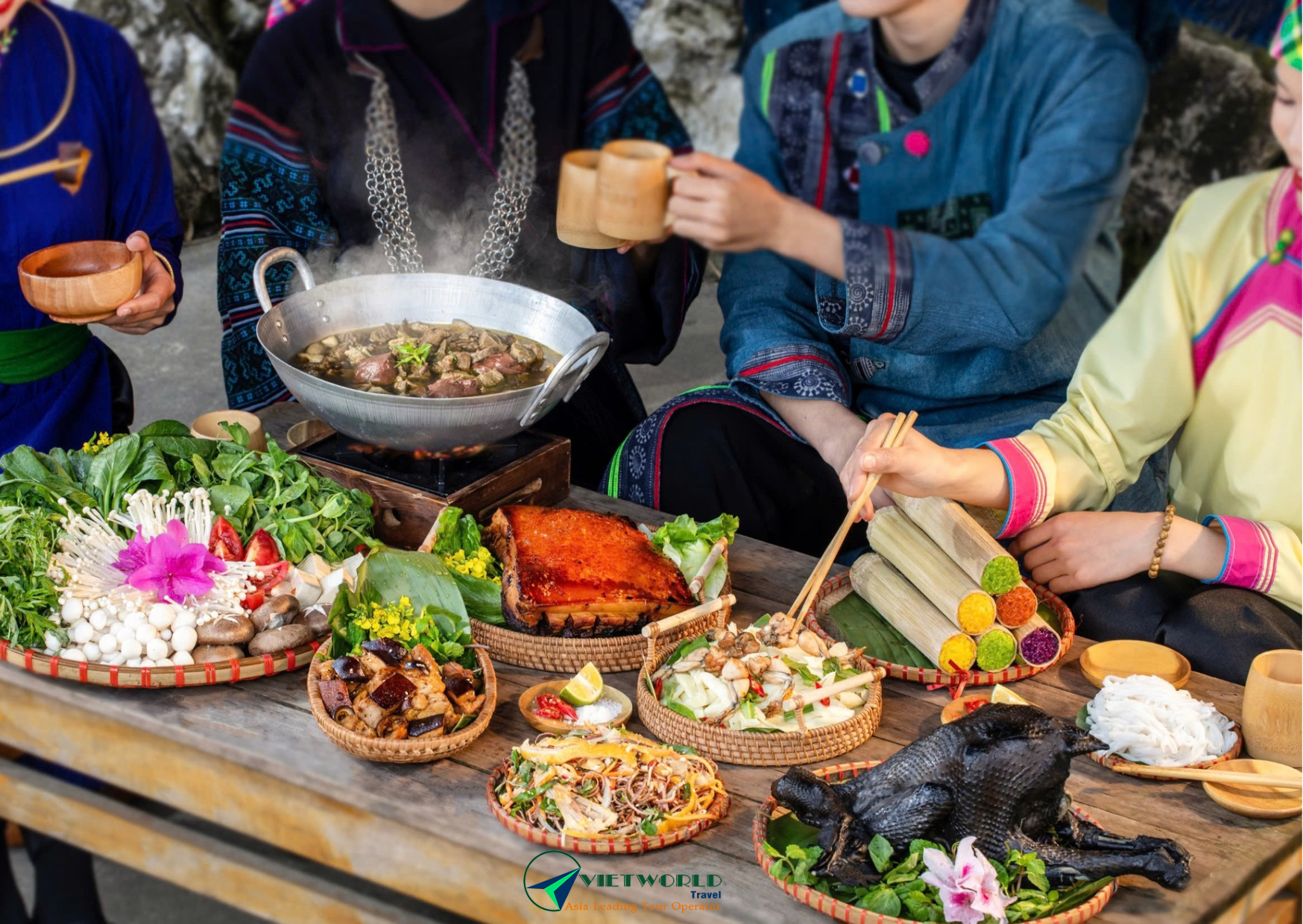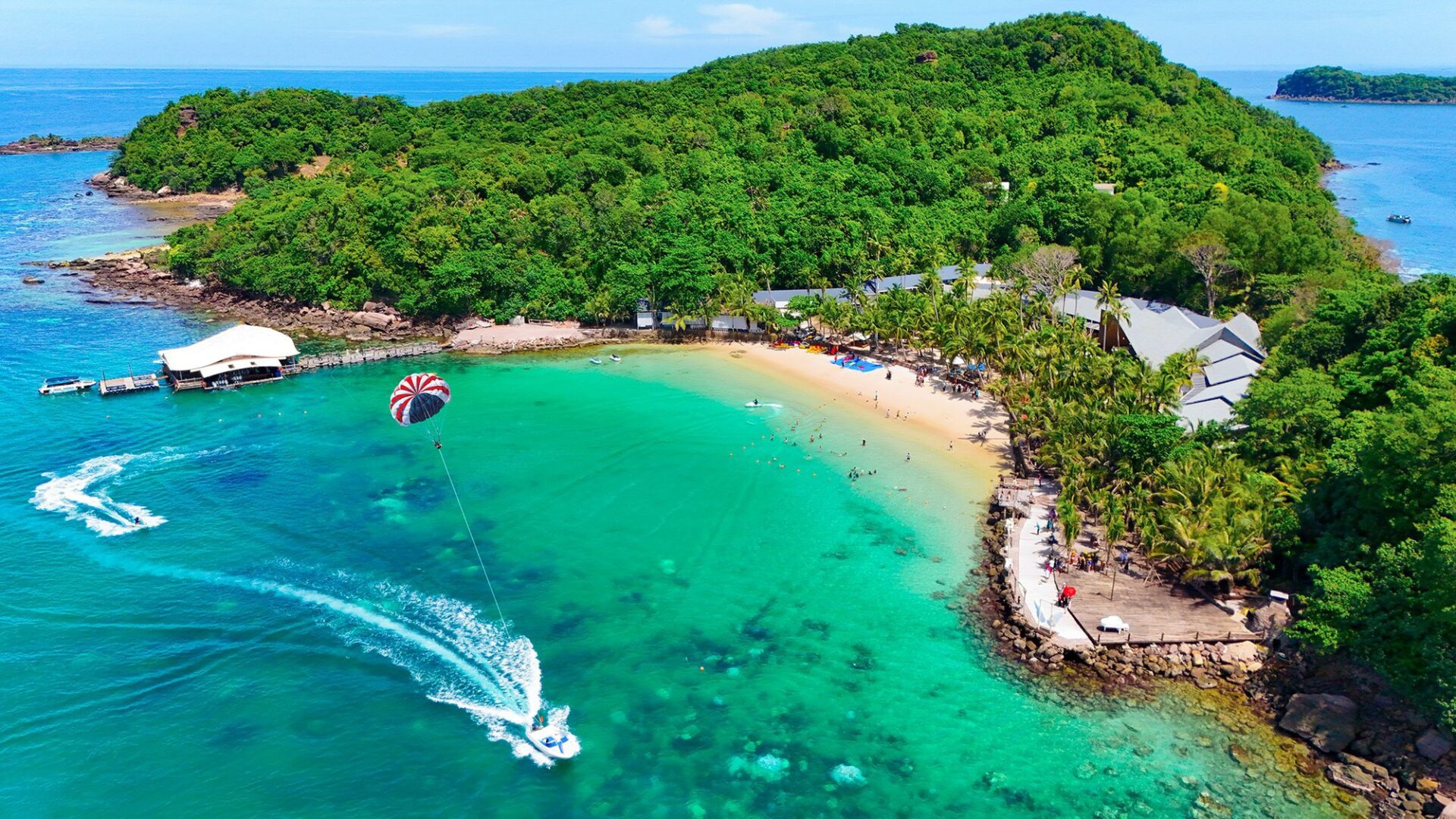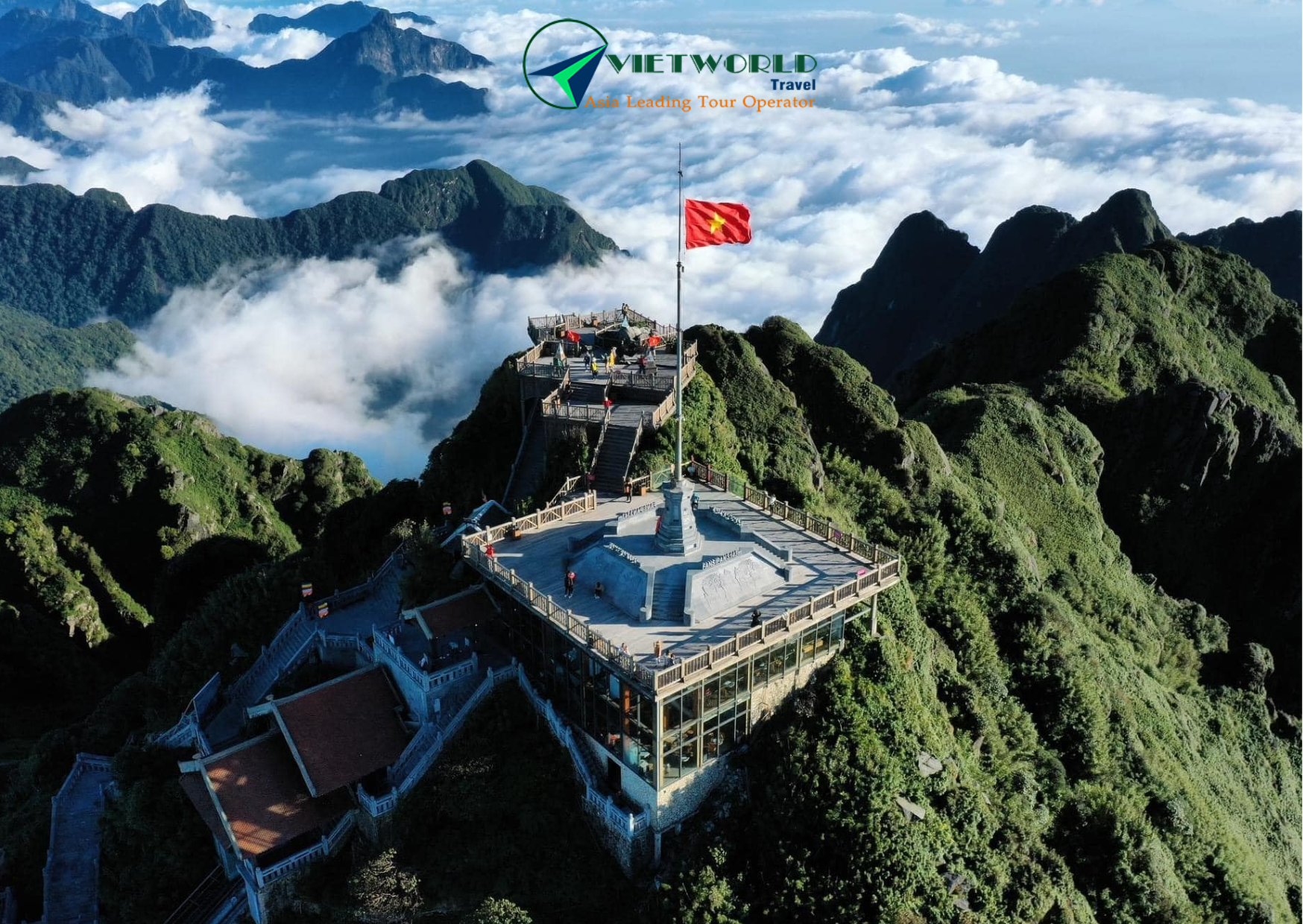Have you ever wondered what it feels like to walk through the clouds, surrounded by endless rice terraces and ancient hill villages? Welcome to Sapa – a hidden gem in the far north of Vietnam that feels like a jaw-dropping scene from a dream.
Nestled in the majestic Hoang Lien Son Mountain range near the Chinese border, Sapa is a place where nature meets culture in the most unforgettable way/most unforgettably. Once a tranquil retreat for French colonists, this enchanting hill town is now a favorite among international travelers seeking raw beauty, thrilling adventure, and profound cultural immersion.
Whether you’re embarking on challenging treks through misty trails, savoring a warm coffee above the clouds, or experiencing the warmth of a homestay with a local family – Sapa promises a mountain escape like no other.
“Sapa – The misty town”
WEATHER & BEST TIME TO VISIT SAPA
(Sapa is truly a four-season destination, with each period offering a unique charm and a different set of experiences)
-
Spring (March – May):
As winter’s chill recedes, Sapa bursts into life. The hills come alive with vibrant flowers, the skies are generally clear, and the weather is pleasantly cool. This is an ideal time for outdoor adventures like trekking and exploring, as the trails are less muddy and the scenery is fresh and green.
“Relaxing with Sapa’s refreshing Spring – Flowers bloom ubiquitously”
-
Summer (June – August):
The famous rice terraces are at their most magnificent, a lush green tapestry stretching across the valleys. While you can expect some rain during this period, these showers often bring out the vibrant colors of the landscape. Summer also marks a time for lively markets and ethnic festivals, offering a fantastic opportunity to witness local traditions.
-
Autumn (September – November):
Often considered the most picturesque time to visit! The vast rice fields transform into a stunning golden hue, ready for harvest. The air is crisp, dry, and wonderfully clear, making it perfect for photography and extensive trekking. The golden terraces against the clear blue sky are a sight you won’t soon forget.
-
Winter (December – February):
Sapa takes on a mystical aura, turning misty and cold, sometimes even graced with a rare snowfall. This season offers a truly romantic and mysterious time to visit, perfect for cozying up by a fire and enjoying the serene, ethereal landscapes.
→ Pro tip: April–May and September–October are the best months to visit for optimal weather and unforgettable landscapes.
TOP SAPA ATTRACTIONS & TRAVEL TIPS YOU SHOULDN’T MISS
(Sapa is a playground for the senses, offering a wealth of natural wonders and cultural encounters.)
1. Fansipan Mountain – “ROOF OF INDOCHINA” – Top 1 Must-see Place in Sapa
Standing proudly at 3,147 meters, Fansipan is the tallest mountain in Indochina and a must-do for any adventurer.
For those seeking an exhilarating ascent without the strenuous hike, take the world-record-holding cable car directly to the summit. As you glide upwards, you’ll witness a dramatic transition from lush valleys to a sea of clouds, often breaking through them to reveal breathtaking panoramic views from the top. Aim for sunrise if you can; watching the first rays paint the landscape golden from the “Roof of Indochina” is an unforgettable moment. If you’re an avid trekker, multi-day guided hikes are available to conquer the summit on foot, offering a profound sense of achievement.
“Check in at the summit of Mount Fansipan”
2. Muong Hoa Valley – 2nd place in Sapa
This iconic valley is Sapa’s postcard image, famous for its stunning rice terraces and ancient rock carvings.
Muong Hoa Valley is truly a trekking paradise. Imagine trails leading you through a vibrant green (or golden, depending on the season) tapestry of rice paddies, meandering past ancient rock carvings that hint at centuries of history. You’ll pass through remote villages of the H’Mong, Dao, and Giay ethnic groups, offering glimpses into their traditional way of life, often accompanied by friendly locals who might share stories or offer handmade crafts.
“Soak in the beauty of the endless rice terraces”
3. Cat Cat Village
One of the oldest H’Mong villages, conveniently located just a short, picturesque walk from Sapa town.
A visit to Cat Cat allows for an easy introduction to H’Mong culture. You’ll stroll along stone paths, marvel at traditional wooden houses perched on hillsides, and witness the power of a cascading waterfall that feeds the village’s watermills. Look out for local artisans at handicraft workshops, demonstrating weaving techniques or crafting silver jewelry. It’s a wonderful place to observe daily life and purchase authentic souvenirs directly from the makers.
4. Ta Van & Lao Chai Villages:
For a deeper dive into local culture, these villages offer a truly immersive experience.
Here, you can truly slow down and connect with the ethnic minorities. Many travelers choose to spend time in homestays, sleeping in traditional wooden houses and sharing meals with local families. This offers an unparalleled opportunity to enjoy authentic local cuisine, observe age-old ethnic customs, and gain a genuine understanding of their rich heritage. Imagine waking up to the sounds of village life and stepping out to a view of endless rice fields.
5. Silver Waterfall:
A majestic waterfall cascading 200 meters down the mountain, located about 12 km from Sapa town.
The sheer power and beauty of this waterfall are captivating. It’s an easy and rewarding stop for photos and a short break, offering a refreshing mist and a dramatic backdrop for your travel memories. The sound of the rushing water alone is enough to inspire awe.
6. Love Waterfall:
A romantic spot surrounded by lush forest – perfect for nature lovers and couples.
Tucked away amidst dense greenery, Love Waterfall is named for a local legend. It’s a serene and picturesque location, ideal for a peaceful stroll, enjoying the tranquility of nature, and capturing beautiful moments, especially for couples. The path to the waterfall itself is a delightful walk through a vibrant forest.
7. Sapa Stone Church (Holy Rosary Church):
Built by the French in the early 20th century, this stone church stands as a historical landmark in the heart of Sapa town.
This iconic structure is a testament to Sapa’s colonial past. Its striking stone architecture provides a beautiful contrast to the surrounding mountains and mist. It’s not only a place of worship but also a central meeting point and a fantastic spot for people-watching, especially during bustling market days when local ethnic groups gather around it.
8. Quy Ho Pass:
One of Vietnam’s highest and most spectacular passes.
This is a journey for the eyes! Whether you traverse it by motorbike or car, O Quy Ho Pass offers some of the most amazing viewpoints, particularly stunning at sunset. The winding roads, dramatic cliffs, and vast valleys create an unforgettable panorama that will leave you breathless. It’s one of Vietnam’s “Four Great Mountain Passes” for a reason.
“Experience one of Vietnam’s most spectacular pass – Quy Ho pass”
9. Ham Rong Mountain:
Located right in Sapa town, this botanical garden and viewpoint offers panoramic sights over Sapa.
A convenient and rewarding climb, Ham Rong Mountain is home to a beautiful botanical garden filled with vibrant flowers and unique rock formations. As you ascend, you’ll discover various viewpoints offering spectacular, unobstructed sights over Sapa town, the Muong Hoa Valley, and often, a glimpse of Fansipan. It’s perfect for a leisurely half-day excursion.
CAFE HOPING & CHILL SPOTS MUST BE CHECKED IN
You know, Sapa isn’t just about trekking; it’s also perfect for lazy mornings with a hot drink and a view. The cool mountain air makes a warm beverage an absolute delight!
1. The Haven Sapa Camp Site & Cafe:
A favorite with backpackers and those seeking expansive views.
More than just a cafe, The Haven offers a vibrant, communal atmosphere. Grab a drink – perhaps a local coffee or a refreshing smoothie – and settle into their famous wooden deck. From here, you’ll soak in an incredible 270° mountain view, making it an unparalleled spot to catch the sunset painting the sky with fiery colors.
2. Cafe in the Clouds:
True to its name, this cafe offers an ethereal experience.
Imagine sipping a rich egg coffee (a Vietnamese specialty) while feeling as if you’re literally floating above the hills. On misty days, the clouds drift right past your window, creating a dreamlike ambiance. On clear days, the views of the surrounding mountains are simply spectacular.
3. Coóng Coffee Homestay:
A charming spot that blends rustic appeal with stunning vistas.
This place exudes rustic charm with its traditional architecture and cozy corners. They serve Instagram-worthy drinks – think beautifully presented coffees and teas – all while offering panoramic views over the valley. It’s a perfect blend of comfort and natural beauty, making it a great place to linger.
4. Lá Dao Spa & Cafe (in Ta Van):
Combine relaxation with scenic beauty in Ta Van village.
Start your experience with a traditional herbal bath, a soothing way to relax after a day of trekking. Afterwards, unwind with a cup of local tea or a refreshing smoothie on their charming bamboo terrace, which offers an uninterrupted view of the verdant rice fields.
5. Fansipan Terrace Cafe:
A laid-back spot for a relaxed meal.
This cafe offers a casual and comfortable setting, making it a perfect stop for brunch. The real draw, however, is the breathtaking Fansipan backdrop. Enjoy your meal while gazing at the majestic mountain, often peeking out from behind a shroud of clouds.
SHOPPING & SOUVENIRS IN SAPA
Sapa’s markets and roadside stalls are not just places to shop; they are vibrant hubs of culture, filled with handmade crafts that tell stories of the ethnic communities.
1. Embroidery & Textiles:
From colorful scarves and intricate jackets to beautifully patterned pillowcases, these items are meticulously made by H’Mong and Dao women. Each design and motif is not merely decorative; it carries deep cultural meaning and often represents aspects of their daily life, beliefs, or tribal identity.
You can watch the women hand-stitching these pieces is fascinating. When you purchase an embroidered item, you’re not just buying a souvenir; you’re taking home a piece of their heritage and supporting their traditional craftsmanship.
2. Silver Jewelry:
Discover a range of ethnic-style earrings, bracelets, and necklaces, all crafted by hand. The silverwork often features intricate designs and patterns unique to the local tribes. These pieces make for unique and meaningful gifts, showcasing the artistic skills of the local artisans.
3. Herbal Products:
Sapa’s rich natural environment yields a variety of beneficial herbs. You’ll find natural soaps, invigorating teas, and therapeutic massage oils made from these local plants. These products offer a sensory reminder of Sapa’s fresh mountain air and natural healing traditions.
→ Tip: Buy directly from artisans or cooperatives. You’ll get better quality and support locall families..
CULTURAL ETIQUETTE & SAPA TRAVEL TIPS TO RESPECT LOCALS
(To make the most of your time in Sapa and connect respectfully with locals, understanding a few cultural courtesies will greatly enhance your experience.)
- Learn a few basic phrases can help you go a long way. Saying “Xin chào” (hello); “cảm ơn” (thank you), and “tạm biệt” (goodbye) is always appreciated.
- Ask before taking photos, especially when in villages or during ceremonies, always ask for permission before pointing your camera.
- Dress modestly when visiting homes or sacred sites, dressing modestly with covered shoulders and knees is a sign of respect for local customs and beliefs.
- Respect nature: Sapa’s beauty is delicate. Stay on marked trails to protect the environment, don’t pick wildflowers, and actively avoid plastic waste.
- What to Pack: Sapa’s weather can be unpredictable. Always bring warm clothes (even in summer, evenings can be cool), sturdy trekking shoes (waterproof if possible), a rain jacket, and sunscreen.
- Cash is King: While Sapa town has some ATMs, they can be limited, and credit cards are rarely accepted in many villages or smaller shops. Bring sufficient cash for your daily expenses, especially when exploring remote areas.
5 BEST DISHES SHOULD BE TRIED IN SAPA
(Sapa’s highland cuisine is uniquely hearty and flavorful, making excellent use of ingredients grown right in the mountains.)
-
Thang Co:
A traditional H’Mong dish made from horse meat, herbs, and spices. This bold and authentic stew is deeply rooted in H’Mong culture and offers a truly unique taste of the highlands. It’s a communal dish, often enjoyed with corn wine.
-
Salmon Hotpot:
Thanks to the cool climate, Sapa is one of the few places in Vietnam that successfully farms salmon. This delicious hotpot is served piping hot with fresh vegetables and noodles, making it a perfect, comforting meal on a cool Sapa evening.
“Enjoy a delicious pot of Salmon Hotpot”
-
Black Chicken (Ga Den):
This indigenous chicken, known for its distinct dark skin, is highly nutritious and has a slightly chewy texture. It’s often served in a fragrant herbal broth, making it a healthy and flavorful local specialty.
“One of Sapa’s most special dishes – Black Chicken”
-
Grilled Skewers:
As night falls, the air in Sapa fills with the enticing aroma of grilled skewers. Head to the night markets and try a variety of options – from marinated pork and mushrooms to sweet potatoes and eggplants, all roasted on open flames. It’s a delicious and interactive street food experience.
-
Corn Wine (Ruou Ngo):
A strong local liquor, Corn Wine is a traditional beverage often served during village gatherings and celebrations. It’s a potent but flavorful drink that embodies the spirit of local hospitality.
TOP FOOD SPOTS
A Quynh Restaurant: Famous for its authentic Thang Co, this is the place to go if you want to try the classic H’Mong dish. (Add: 15 Thach Son Street, Sapa Town)
The Hill Station Signature Restaurant: Offers a cozy atmosphere and a modern, refined twist on ethnic food, perfect for those looking for a contemporary dining experience. (Add: 037 Fansipan Street, Sapa Town)
Sapa Market Food Court: For a truly local and affordable culinary adventure, dive into the bustling Sapa Market food stalls. Here, you can sample a wide variety of dishes, from sticky rice to noodle soups, all fresh and flavorful. (Add: Inside Sapa Market, Dien Bien Phu Street, Sapa Town)
Moment Romantic Restaurant: Popular for its comforting hotpots and grilled dishes, and true to its name, it often provides a great view, adding to the dining experience. (Add: 26 Muong Hoa Street, Sapa Town)
GETTING AROUND IN SAPA
(Sapa offers several transportation options to suit different travel styles.)
1. Motorbike Rental
This is a popular and budget-friendly way to explore Sapa. Rental prices are usually around 120,000–150,000 VND/day, and include helmets and raincoats. Ideal for nearby spots like Cat Cat Village, Silver Waterfall, or Ham Rong Mountain.
→ Tip: The roads are mountainous and slippery during rain, so some experience riding manual bikes is recommended.
2. Private Car with Driver
Best for groups or families and for reaching remote destinations like O Quy Ho Pass or Ta Van Village. Rates typically range from 500,000 to 1,200,000 VND/day depending on route and distance.
3. Local Taxis
Available in town, but fares can be high. Always ask for the price beforehand or choose taxis with meters.
4. Electric Buggies (in town)
Some hotels and local services provide electric car rides within the town center—great for a quick visit to the market or Stone Church.
5. Trekking by Foot
One of the most authentic ways to experience Sapa. Consider hiring a local ethnic guide for longer treks or village visits, as they offer insight and safe navigation.
In summary, Sapa is more than just a destination; it’s a feeling. It’s the ethereal beauty of early morning mist drifting over ancient mountains. It’s the warmth of sharing a traditional meal with a welcoming family in a rustic wooden house. It’s the slow, comforting rhythm of nature and village life that allows you to truly disconnect and find peace.
So whether you come for the breathtaking views, the profound cultural experiences, or simply the peace and quiet of the highlands – take your time, go deeper, and let Sapa surprise you at every turn.

